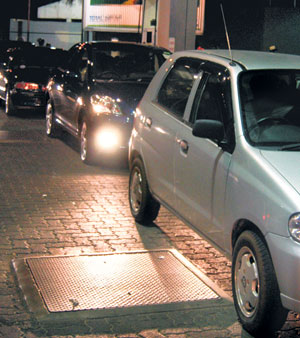
Evaluation of the oil exploration bidsBy Dulip Jayawardena Point of View
The Minister of Petroleum Resources was recently quoted as saying that only Block 2 would be considered for evaluation although the government invited offers for three Blocks. The reason was that all three companies namely ONGC Videsh, Cairn India and Niko Resources of Cyprus had sent in a bid each for this block. Subsequently the Minister at a press conference said the award will be made before the end of this month. The Petroleum Resources Development Committee (PRDC) is to meet to consider the award to the company where the local agent is the same as the consultants to the Ministry - Fugro. Due to strong objections from certain quarters, Fugro was not allowed to assist the Technical Evaluation Committee (TEC) and the Cabinet Appointed Negotiating Committee (CANC) on evaluation of bids due to conflict of interest. It is reported that international and Indian oil companies have shown an overwhelming interest in the 57 blocks that were offered under the New Exploration Licensing Policy (NELP 7). There were 19 deep-water blocks covering an area of 106,867 sq. kms. 89 bids have been received for these blocks. For the 9 shallow water blocks covering an area of 21, 420 sq. kms, there are 99 bids. The 29 blocks offered on land covering a total area of 42,750 sq kms received a record 242 bids. This conclusively proves that oil companies are now giving priority to onshore areas due to the scarcity of offshore rigs as stated by me earlier. The NELP 7 has already received a total of 430 bids for 57 blocks covering an area of 171,037 sq kms. In comparison Sri Lanka received 6 bids for a total deep-water area of 11,037 sq. kms (Blocks 2, 3 and 4). This clearly indicates that the Mannar Basin a frontier area is definitely not attractive due to the lack of adequate data such as 3D seismic, absence of exploratory drill holes as well as an attractive fiscal package for exploration risk. It is presumed that the TEC as well as the Cabinet Appointed Negotiating Committee (CANC) have completed the evaluation and negotiating process and submitted their recommendations to the PRDC. I am not aware what assumptions the above Committees considered. However as a comparison I would like to state the Bid Evaluation Criteria (BEC) for the fiscal package for NELP 7. Nine scenarios of production profiles and prices will be considered for evaluation of fiscal packages based on the weighted average of Net Present Value (NPV) of government share of Profit Petroleum under each scenario.The exploration and development costs for the purpose of fiscal evaluation have been estimated for all the 57 blocks offered under NELP 7. In the 19 deep-water blocks the exploration costs varied from US$140 million to US$203 million. The development costs estimated varied from US $573 to US$1316 million. Andaman and Nicobar off shore was an exception where the estimates were US$ 455million for exploration and US$1820 for development respectively. In comparison the estimated costs of exploration and development for the on land blocks varied from US$ 23 million to US$ 49 million and US$ 70 to US$ 148 million, respectively. The above figures clearly indicate that offshore exploration and development of oil and gas deposits are more expensive than on land by a factor of at least 5. I would like to draw the attention of the TEC as well as the CANC whether the above estimates were considered for BEC as exploration and development costs are recovered under Article 15 of Model Production Sharing Agreement (MPRA) Recovery of Cost Petroleum. Further the production profiles under various scenarios have to be considered for determination of Production Sharing of Petroleum (Article 16 of MPRA). Attention of the CANC is drawn to this issue. The Directorate General of Hydrocarbons (DGH) is competent to evaluate bids under the NELP with over 20 years experience. It would have been more effective and realistic if the bid evaluation was done by DGH as consultants to the government. It is suggested that DGH of India be retained as consultants for the next bidding round envisaged in Mannar off shore blocks. This survey indicated that there are over 14,000 feet (4,000 metres) of sediment of Tertiary and Jurassic age in the centre of the Jaffna Peninsula that are considered host rocks for oil and gas accumulation It is suggested that an integrated geophysical survey be carried out to determine the presence of hydrocarbons in the Jaffna Peninsula. If such attempts to locate oil and gas on land are successful it will definitely be more economical to exploit than off shore deposits. |
|
||||||
|
||||||
| || Front
Page | News
| Editorial
| Columns
| Sports
| Plus
| Financial
Times | International
| Mirror
| TV
Times | Funday Times || |
| |
Reproduction of articles permitted when used without any alterations to contents and a link to the source page.
|
© Copyright
2008 | Wijeya
Newspapers Ltd.Colombo. Sri Lanka. All Rights Reserved. |
